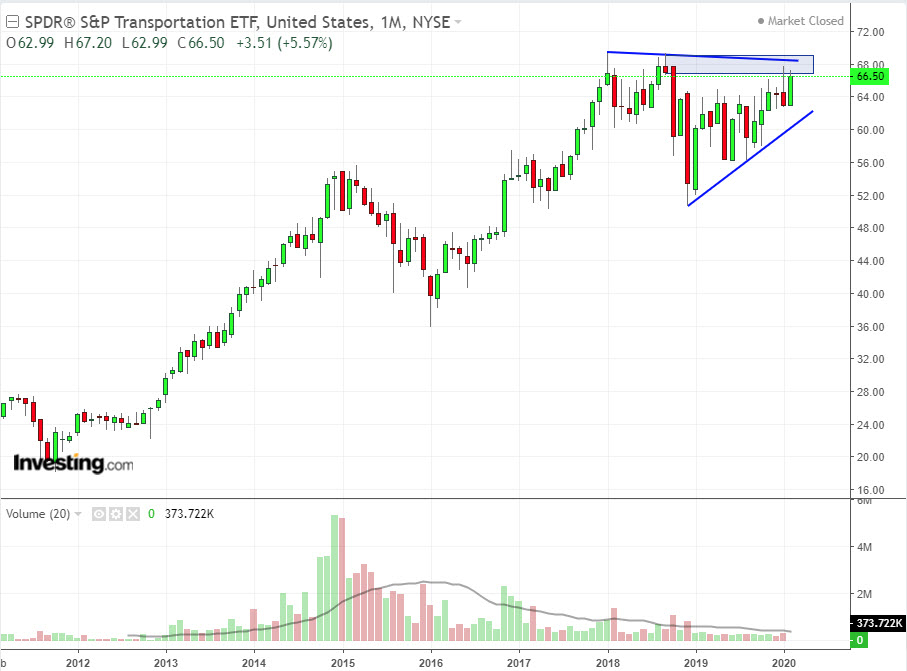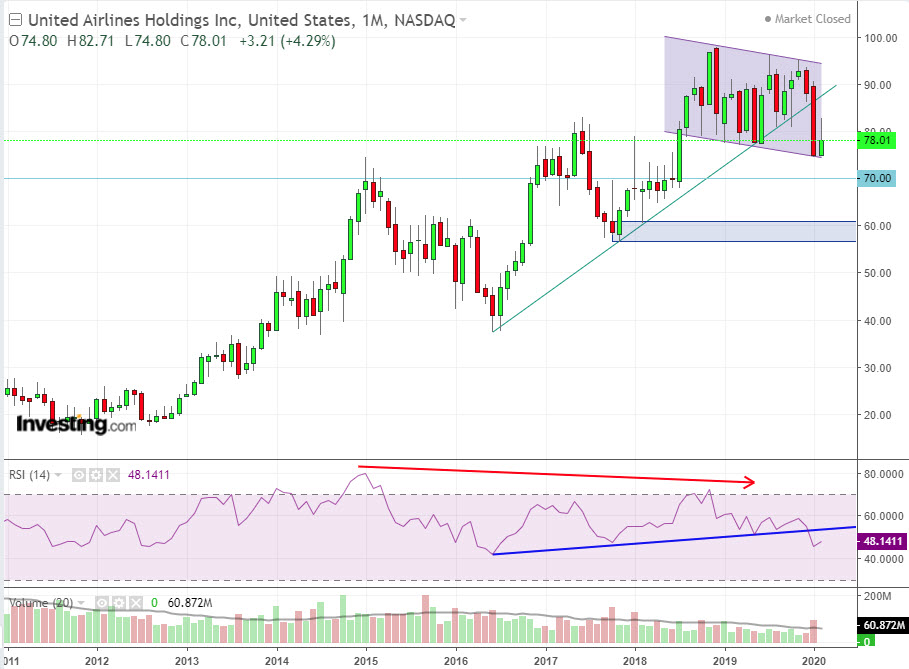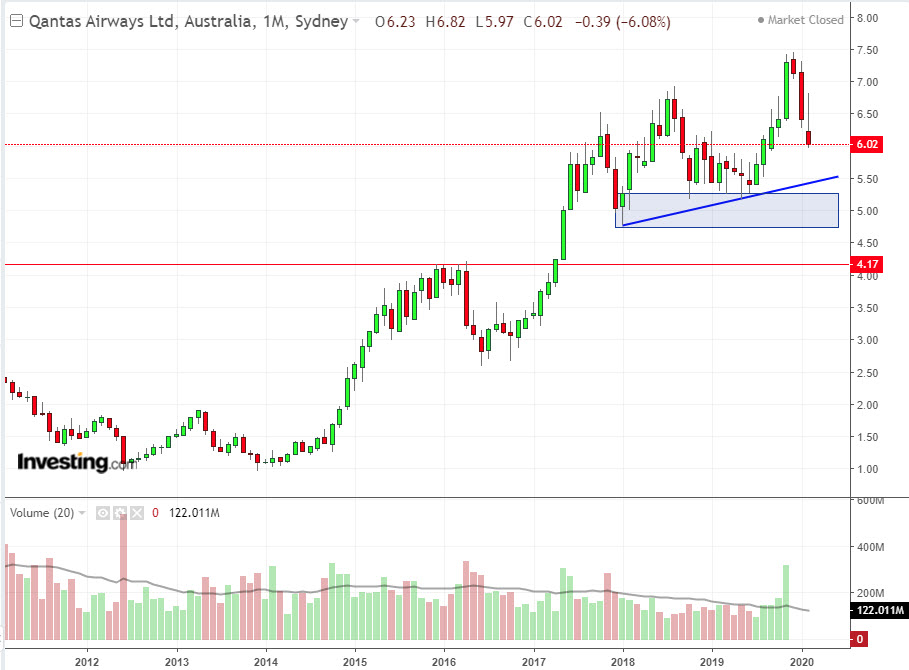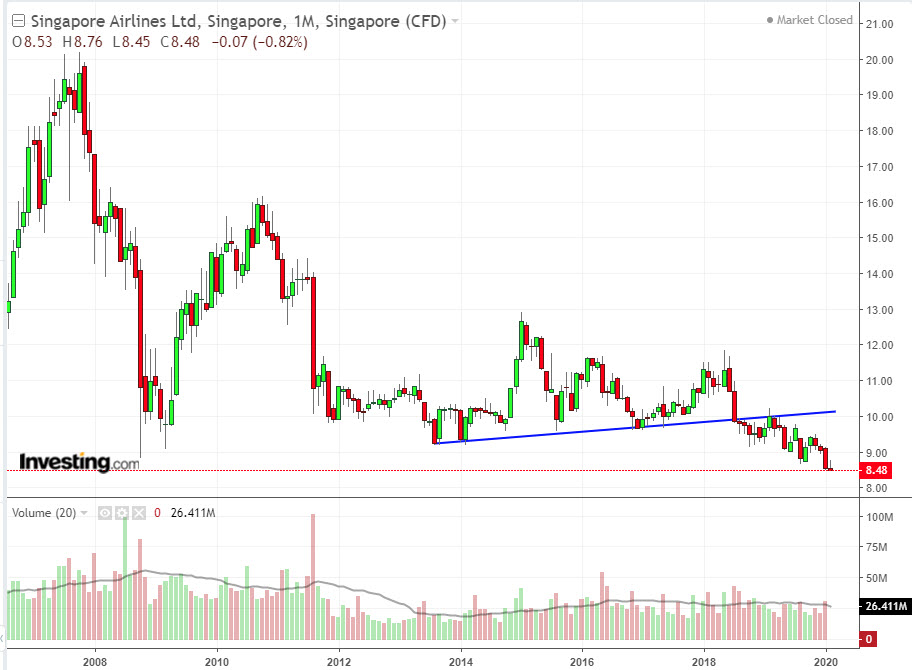So far, 2020 hasn't been especially kind to travel-related stocks, particularly airline shares. As last year closed, a flu-like illness emerged from the central China city of Wuhan. By early January, it was identified as something new and given the name coronavirus, later Covid-19.
The virus rapidly spread to other areas of China, and via travelers to Thailand and Japan as well. By mid-January the first deaths from Covid-19 were being reported. On Jan. 23, Chinese regulators suspended travel into and out of the Wuhan area, even though the Sino New Year holiday, which began on Jan. 25, was quickly approaching.
In the following days, as reports of additional cases soared, travel restrictions were extended to a broader swathe of China; then flights into and out of China were cancelled and the local population was told to stay home from work and to cancel any holiday travel.
With workers furloughed, factories reduce output, leading to fewer shipments and another source of income for airlines dries up.
Transportation sector stocks began to slide. Even broader travel related ETFs started wavering.

The SPDR S&P Transportation Fund (NYSE:XTN), which is still up 3.39% this year—and whose holdings are comprised of 43.7% ground freight and logistics stocks; 25.82% airline equities and 16.01% air freight and courier services— remains, so far, within a triangle. However, a supply zone pushed the price lower last month, though this month is still green.
But airline stocks in both the U.S. and Asia are clearly showing the strain.

United Airlines (NASDAQ:UAL) broke below the uptrend line last month. First support is around 70, demand zone around 60. The RSI is showing bearish divergence (red arrow) and a broken trendline (blue).

Australia's Qantas (ASX:QAN) dropped sharply last month, and this month's shooting star candle seems to be heading toward the uptrend line (blue) and demand zone (light blue rectangle) around 5.00-5.50.

Singapore Airlines (SI:SIAL) is at an all time low, with no clear bottom apparent at the moment.
Though China has eased some travel restrictions within the mainland as the number of newly reported cases appears to have slowed, fears of the pandemic's spread have escalated globally. The cancellation of air and sea travel around the world—the Far East already, and now with an expanding outbreak in Italy, possibly to Europe, and potentially ultimately to the U.S. as well if the situation isn't contained—will likely pressure the sector further.
What might provide a boost to ailing transportation shares?
- Should the price of oil drop, airline overhead costs would decrease accordingly
- Airlines have already started increasing air freight shipping prices, a move that could enhance their bottom lines
- The arrival of warmer weather could potentially reduce the chances of the virus spreading further
Nevertheless, the best solution would, naturally, be a return to some sort of normal, in both the travel and health arenas. Of course, when that might happen is anyone's guess.
